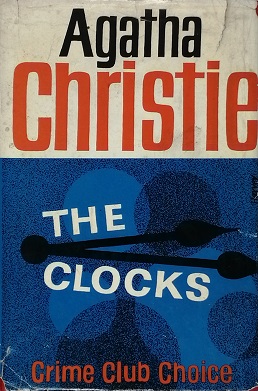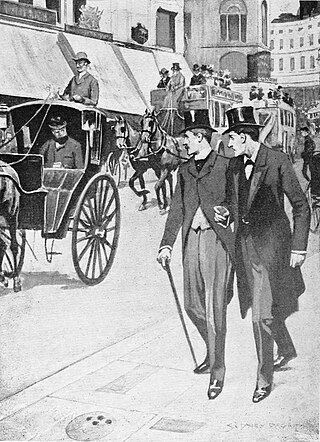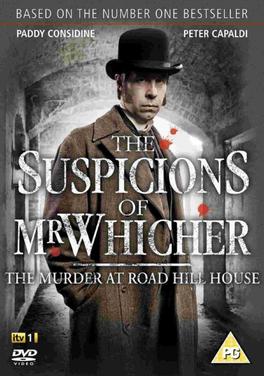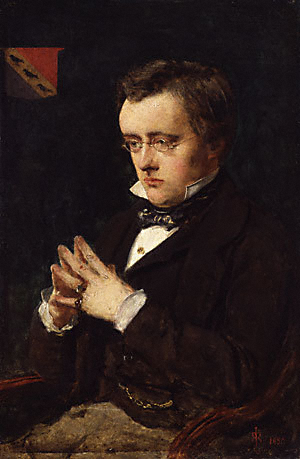
Detective fiction is a subgenre of crime fiction and mystery fiction in which an investigator or a detective—whether professional, amateur or retired—investigates a crime, often murder. The detective genre began around the same time as speculative fiction and other genre fiction in the mid-nineteenth century and has remained extremely popular, particularly in novels. Some of the most famous heroes of detective fiction include C. Auguste Dupin, Sherlock Holmes, and Hercule Poirot. Juvenile stories featuring The Hardy Boys, Nancy Drew, and The Boxcar Children have also remained in print for several decades.

William Wilkie Collins was an English novelist and playwright known especially for The Woman in White (1859), a mystery novel and early sensation novel, and for The Moonstone (1868), which established many of the ground rules of the modern detective novel and is also perhaps the earliest clear example of the police procedural genre.

Mystery is a fiction genre where the nature of an event, usually a murder or other crime, remains mysterious until the end of the story. Often within a closed circle of suspects, each suspect is usually provided with a credible motive and a reasonable opportunity for committing the crime. The central character is often a detective, who eventually solves the mystery by logical deduction from facts presented to the reader. Some mystery books are non-fiction. Mystery fiction can be detective stories in which the emphasis is on the puzzle or suspense element and its logical solution such as a whodunit. Mystery fiction can be contrasted with hardboiled detective stories, which focus on action and gritty realism.

The Moonstone: A Romance by Wilkie Collins is an 1868 British epistolary novel. It is an early example of the modern detective novel, and established many of the ground rules of the modern genre. Its publication was started on 4 January 1868 and was completed on 8 August 1868. The story was serialised in Charles Dickens’s magazine All the Year Round. Collins adapted The Moonstone for the stage in 1877.

Bleak House is a novel by Charles Dickens, first published as a 20-episode serial between March 1852 and September 1853. The novel has many characters and several subplots, and is told partly by the novel's heroine, Esther Summerson, and partly by an omniscient narrator. At the centre of Bleak House is a long-running legal case in the Court of Chancery, Jarndyce and Jarndyce, which comes about because a testator has written several conflicting wills. In a preface to the 1853 first edition, Dickens said there were many actual precedents for his fictional case. One such was probably Thellusson v Woodford, in which a will read in 1797 was contested and not determined until 1859. Though many in the legal profession criticised Dickens's satire as exaggerated, Bleak House helped support a judicial reform movement that culminated in the enactment of legal reform in the 1870s.
The police procedural, police show, or police crime drama is a subgenre of procedural drama and detective fiction that emphasizes the investigative procedure of police officers, police detectives, or law enforcement agencies as the protagonists, as contrasted with other genres that focus on non-police investigators such as private investigators.

The Clocks is a work of detective fiction by British writer Agatha Christie, first published in the UK by the Collins Crime Club on 7 November 1963 and in the US by Dodd, Mead and Company the following year. It features the Belgian detective Hercule Poirot. The UK edition retailed at sixteen shillings (16/-) and the US edition at $4.50.

Constance Emily Kent (1844–1944) was an English woman who confessed to the murder of her half-brother, Francis Saville Kent, in 1860, when she was aged 16 and he aged three. The case led to high-level pronouncements that there was no longer any ancient priest-penitent privilege in England and Wales. Kent's death sentence was commuted to life imprisonment, and she was released after serving twenty years. In later life, she changed her name to Ruth Emilie Kaye, became a nurse and for twenty years was matron of a nurses' home in East Maitland, New South Wales. She lived to the age of 100.

Charles Frederick Field was a British police officer with Scotland Yard and, following his retirement, a private detective. Field is perhaps best known as the basis for Inspector Bucket in Charles Dickens's novel Bleak House.

The gentleman detective, less commonly lady detective, is a type of fictional character. He has long been a staple of crime fiction, particularly in detective novels and short stories set in the United Kingdom in the Golden Age. The heroes of these adventures are typically both gentlemen by conduct and often also members of the British gentry. The literary heroes being in opposition to professional police force detectives from the working classes.

The Moonstone is a 1934 American mystery film directed by Reginald Barker and starring David Manners, Phyllis Barry, Gustav von Seyffertitz and Jameson Thomas. It is an adaptation of the 1868 novel The Moonstone by Wilkie Collins. The film retains the book's British location, but uses a contemporary 1930s setting rather than the Victorian era of the original. It is one of three film versions of the novel, which include silent versions in 1915 and 1909, although a number of television and radio adaptations have been made.

The Suspicions of Mr Whicher is a British series of television films made by Hat Trick Productions for ITV, written by Helen Edmundson and Neil McKay. It stars Paddy Considine in the title role of detective inspector Jack Whicher of the Metropolitan Police. The first film, The Murder at Road Hill House, was based on the real-life Constance Kent murder case of 1860, as interpreted by Kate Summerscale in her 2008 book The Suspicions of Mr Whicher or The Murder at Road Hill House, which was the winner of Britain's Samuel Johnson Prize for Non-Fiction in 2008, and was read as BBC Radio 4's Book of the Week in April the same year.

Who Killed Zebedee? is a short detective story by Wilkie Collins, first published under the alternate title "The Policeman & The Cook" in serial form in 1881. A young wife is convinced that, while sleepwalking, she has murdered her own husband, John Zebedee. Together, a young constable and the cook from the couple's final lodgings attempt to uncover the truth.

Detective Inspector Jonathan "Jack" Whicher was an English police detective. He was one of the original eight members of London's newly formed Detective Branch, which was established at Scotland Yard in 1842. During his career, Whicher earned a reputation among the finest in Europe.

This is a bibliography of the works of Wilkie Collins.
Miss Drusilla Clack is a character, and part-narrator, in Wilkie Collins' 1868 novel The Moonstone.
Ezra Jennings is a character, and part-narrator, in Wilkie Collins' 1868 novel The Moonstone. Ill-favoured, and of ill repute, he is ultimately responsible for solving the mystery of the Moonstone's theft, and so for reuniting the hero with the heroine, Rachel Verinder.

The Moonstone is a daytime drama series produced by King Bert Productions for BBC One. It is an adaptation of the Wilkie Collins 1868 novel of the same name described by T.S. Eliot as the first and greatest of English detective novels. It stars Josh Silver and John Thomson.

The Moonstone is a British mystery television series adapted from the 1868 novel The Moonstone by Wilkie Collins. It aired on BBC 1 in five episodes between 16 January and 13 February 1972. It subsequently aired in America on PBS-TV's Masterpiece Theatre between 10 December 1972 and 7 January 1973.
















